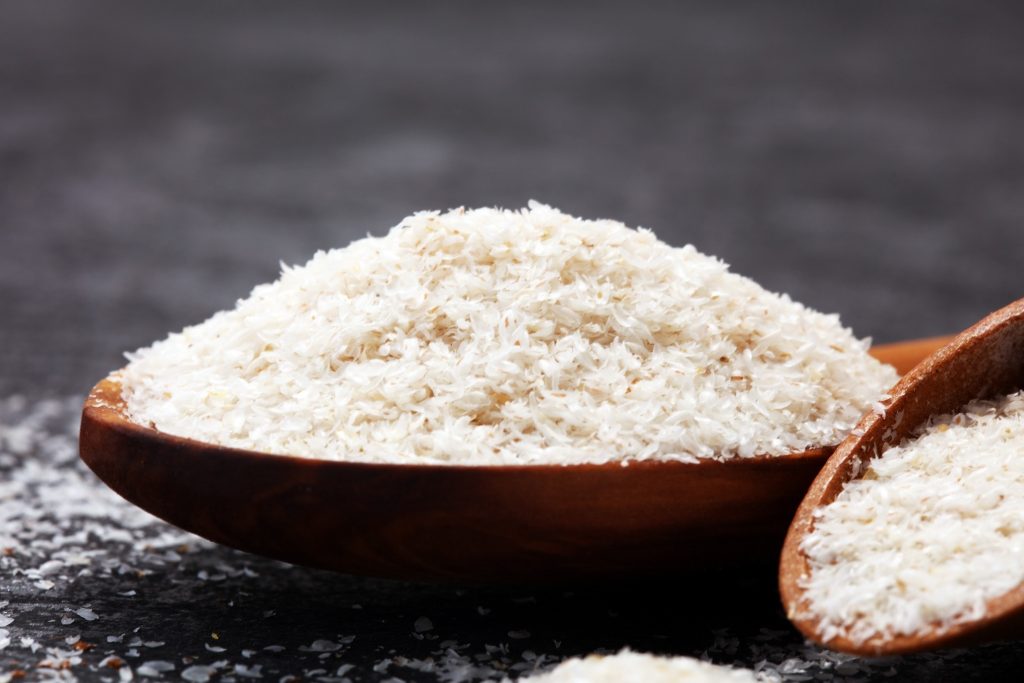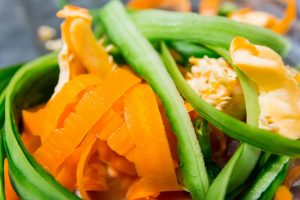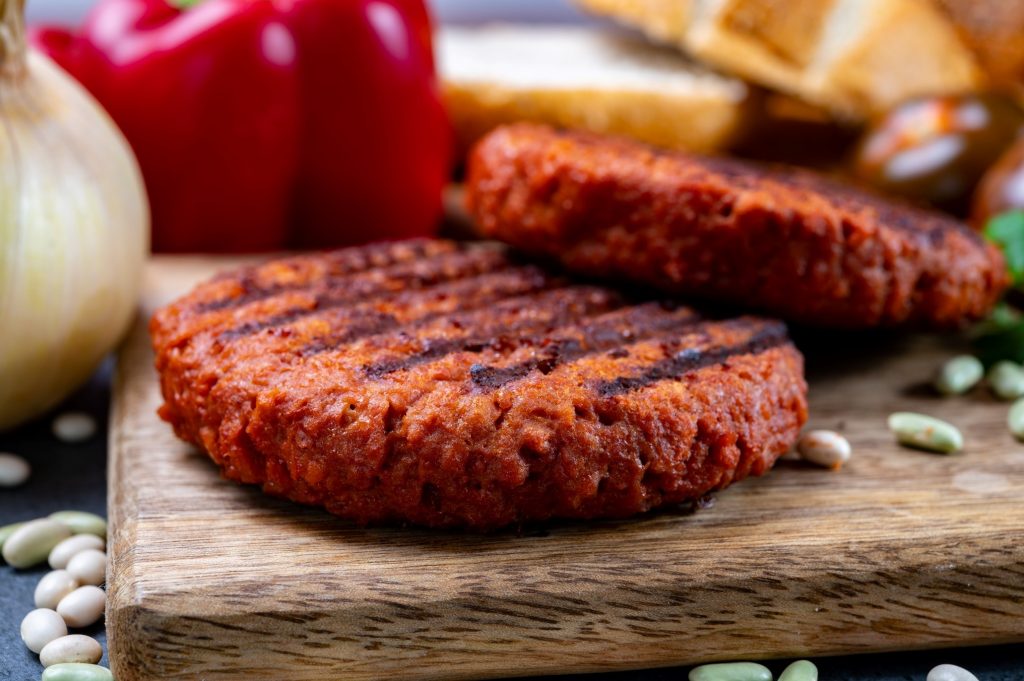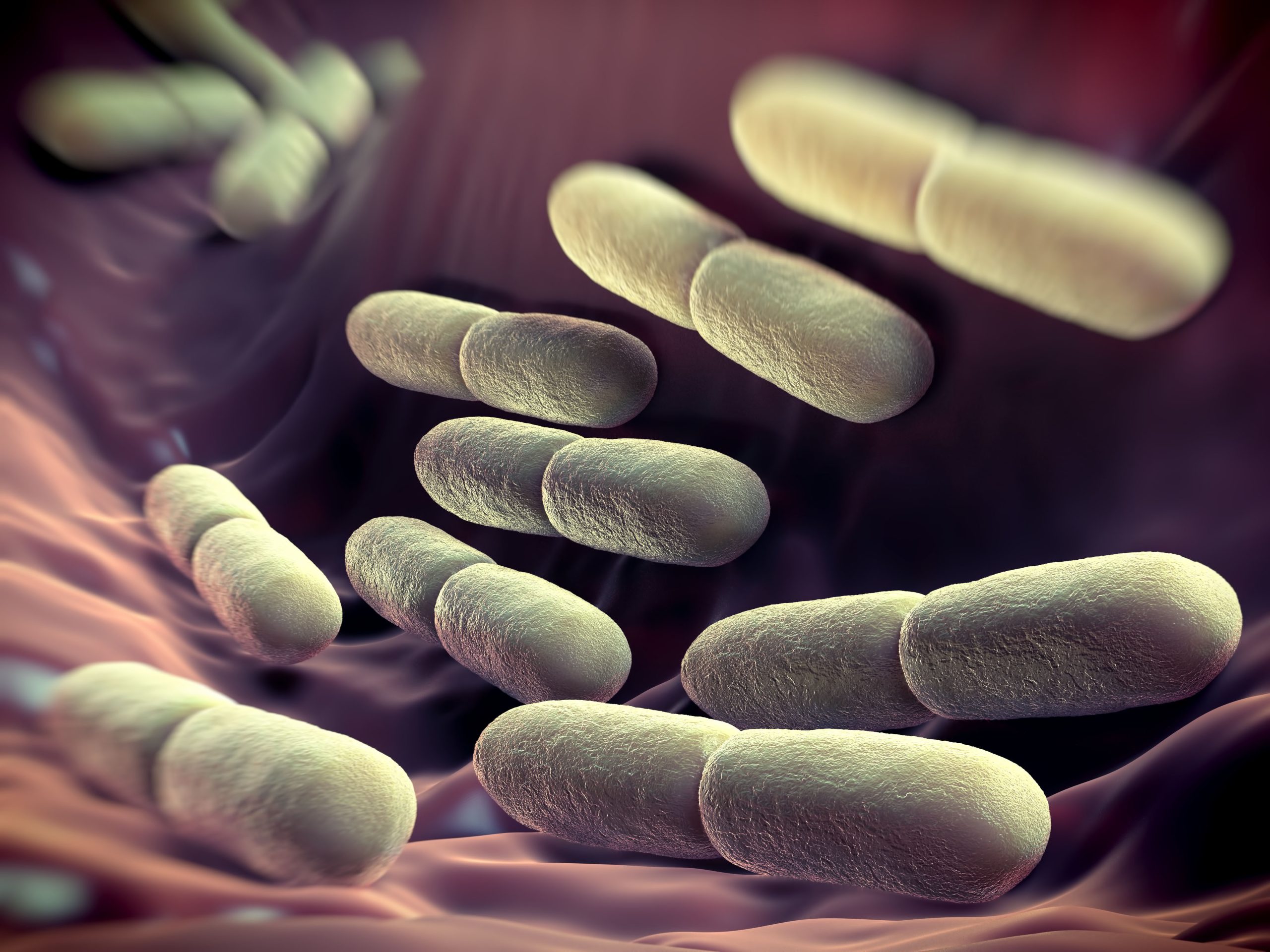Fiber is very well associated with many health benefits when consumed as part of a healthy and balanced diet. There are a variety of different sources and types of dietary fiber that have different health benefits, but they can also be used as functional ingredients in foods and beverages. Dietary fiber is an ingredient that can influence many attributes of the product, such as the texture, succulence, cohesiveness, appearance, and sensory properties.
These unique properties of fiber can improve the sensory properties of many types of foods and beverages. This can include texture improvements such as providing a firmer bite to a burger, enhancing the product’s processability such as increasing the cooking yield, and improving the nutritional quality due to the inherent nutritional properties.
In many meat and plant-based meat alternative products, other functional ingredients to fibers cannot be neglected or completely replaced. However, thorough understanding of the functionality of fibers within application allows the improvement of characteristics such as texture, cooking yield, fat reduction, while also adding the health benefit of fiber enrichment to meat and plant-based meat alternative products. This article will look at these aspects in more detail, focusing mainly on the functional role of fiber in meat and plant-based meat alternatives.

Functional properties of fiber
Besides their nutritional benefit, dietary fibers provide a range of technological properties when incorporated in food systems. Some of these are shown in the list below:
-
- Water binding – The ability to bind water and swell
- Oil binding – The ability to bind oil and swell
- Anti-caking – The ability to prevent lump formation in powder materials
- Texturizing – The ability to enhance texture properties of food products (e.g. by providing viscosity, thickness, etc.)
- Bulking agent – The ability to increase the volume in food products and thus increase the sense of satiety, especially in foods designed for weight reduction
- Fat mimetic – The ability to mimic (not replace) some of the organoleptic and physical properties of fat molecules while simultaneously providing lower energy values to the food products
- Gelling – The ability to thicken and form a gel. This depends on the product’s hydration properties and its ability to form a network
These unique technological properties result in fibers being used across a wide range of food products, from baked goods and confectionary, to dairy and beverages. And although someone might not think about it at first, fibers are also widely used in meat and plant-based meat alternative products.
Fiber functionality in meat and plant-based meat alternatives
When it comes to meat and plant-based meat alternatives, fiber incorporation can deliver important functional properties while also also improving the nutrition of a product.
One key consideration when using fibers in meat and meat alternative applications is understanding how fibers behave in a complex matrix (proteins, starches, fat, salts, etc.). As already mentioned, fiber has many unique functional properties, and each property can differ based on various parameters, such as:
-
- Fiber source
- Fiber extraction method
- Chemical structure, pH, ionic strength
- Fiber type: Soluble / Insoluble
- Length of fiber
- Fiber purity
Adding fiber to foods – how does this impact the product?
Depending on the fiber source (e.g. root vegetables, fruit peels, etc.) and extraction method (e.g. chemical vs microbial methods), different types of fibers can be obtained.1
The most common classification divides fibers into soluble and insoluble, based on their solubility in water. Insoluble fibers consist mostly of cellulose, hemicellulose and lignin, and soluble fibers consist mostly of pentosanes, pectins, gums and mucilage.2,3

Insoluble fibers like bamboo or wheat have good water and oil holding capacity which will help in firming up the texture of cooked products. Water and oil binding properties are related to chemical structure, ionic strength, pH and particle size of fiber.4 This feature can be helpful in the development of meat and plant-based burgers or sausages where we want to achieve a firmer structure by binding the extra water in the system. Depending on the extraction process, some fibers might still contain higher levels of starch that can gel upon heating and further enhance texture properties.
Another example is Psyllium, a soluble fiber that dissolves in water and can help with increasing viscosity of liquid systems such as brines. When going through a heat treatment process, psyllium also forms a gel-like structure that cannot be achieved with the use of insoluble fibers such as bamboo, wheat, or oat fiber.
The impact of water quantity on fiber functionality
Incorporating fiber in a food product can result in a higher or lower water (and/or oil) uptake. As with many other ingredients, fiber will “compete” for the water in the system and this can also influence the functionality of some other ingredients, for example proteins and hydrocolloids. One challenge in using fibers in plant-based meat alternatives is that very high concentrations of fibers can bind high amounts of water, making it less accessible to other ingredients. If fibers are used in excess without enough hydration, the network formation between starches, proteins, and hydrocolloids can be disrupted, resulting in a very dry and perhaps too firm product. Using fibers at very high quantities can also bring an additional and sometimes undesirable taste impact. Flavour can be a challenge with plant-based products in general, as discussed in Flavour Masking Challenges in Plant-Based Meat Alternatives – Kerry Health And Nutrition Institute.
Benefits of adding fiber to meat and plant-based meat alternatives
As we have already briefly discussed above, fiber incorporation in meat and plant-based burgers and sausages can bring some application challenges. However, a thorough understanding of different types of fiber and their functionality in application can result in very positive outcomes, such as:
-
-
- Increasing the yields of cooked minced products like burgers and sausages
- Giving burgers a firmer bite with a more cohesive structure
- Fat reducing properties while also keeping burgers and sausages juicy
- Binding and upholding the water in fresh or cooked minced products
-
Contributor:
-
References
- McCleary, B. V., Sloane, N., Draga, A. & Lazewska, I. (2013). Measurement of total dietary fiber using AOAC Method 2009.01. AACC International Approved Method 32- 45.01): evaluation and updates. Cereal Chem., 90, 4, 396-414.
- Hussain S, Jõudu I, Bhat R. Dietary Fiber from Underutilized Plant Resources—A Positive Approach for Valorisation of Fruit and Vegetable Wastes. Sustainability. 2020; 12(13):5401. https://doi.org/10.3390/su12135401
- Mehta, N., Ahlawat, S. S., Sharma, D. P., & Dabur, R. S. (2015). Novel trends in development of dietary fiber rich meat products-a critical review. Journal of food science and technology, 52(2), 633–647. https://doi.org/10.1007/s13197-013-1010-2
- Sofi, S., Jagmohan Singh, Shafiya Rafiq, and Rafia Rashid. 2017. “Fortification of Dietary Fiber Ingriedents in Meat Application: A Review”. International Journal of Biochemistry Research & Review 19 (2), 1-14. https://doi.org/10.9734/IJBCRR/2017/36561.


 Tomaž holds a BSc degree in Food Science and Nutrition from Biotechnical University in Ljubljana, Slovenia and a master’s degree in Food Innovation and Product Design from AgroParisTech, Paris. His Master’s thesis focused on protein behaviour in liquid milk systems in partner with Danone Nutricia.
Tomaž holds a BSc degree in Food Science and Nutrition from Biotechnical University in Ljubljana, Slovenia and a master’s degree in Food Innovation and Product Design from AgroParisTech, Paris. His Master’s thesis focused on protein behaviour in liquid milk systems in partner with Danone Nutricia. 

